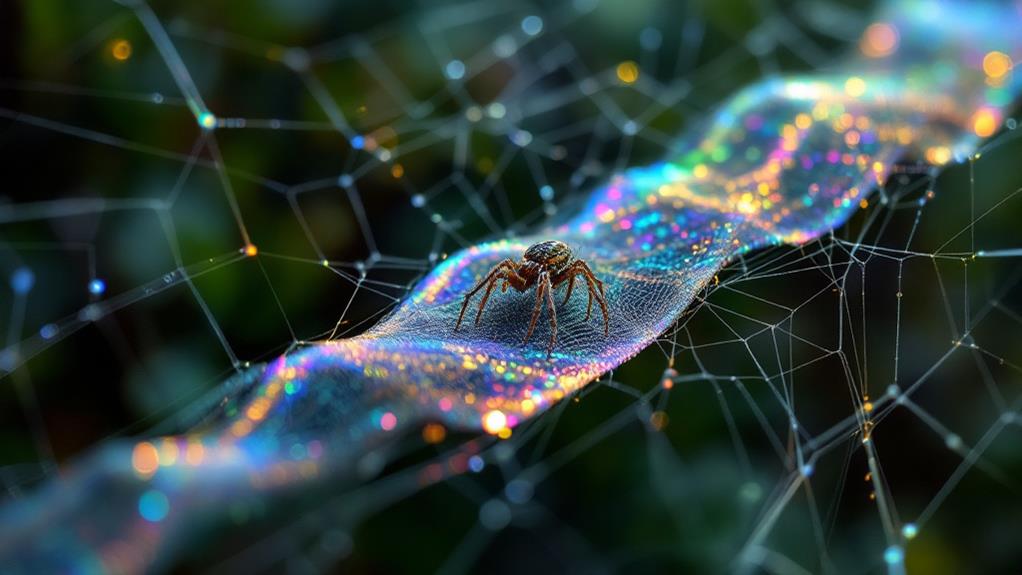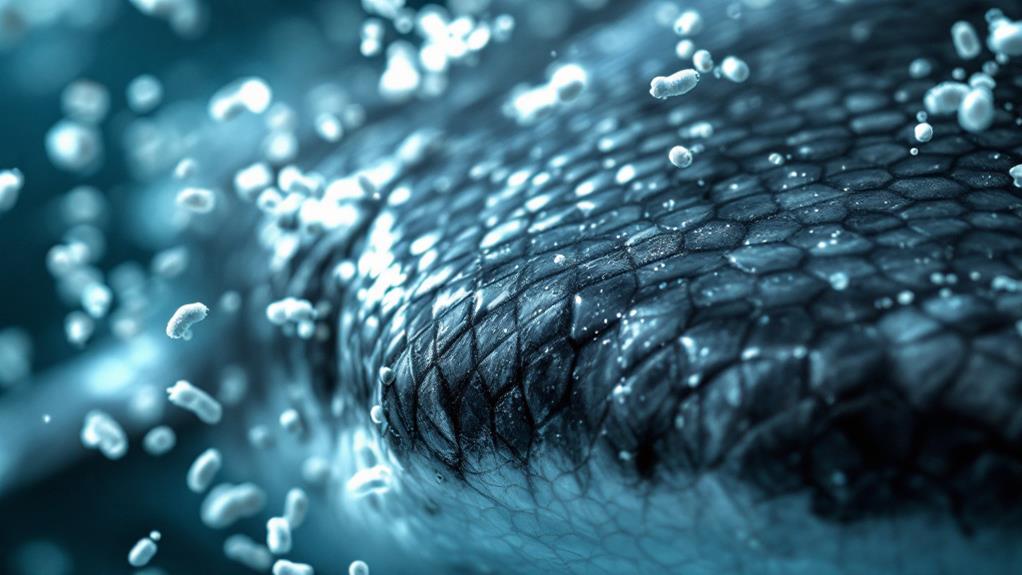The Amazing Origins of Firefly-Inspired LED Lights: Nature's Glow in Technology
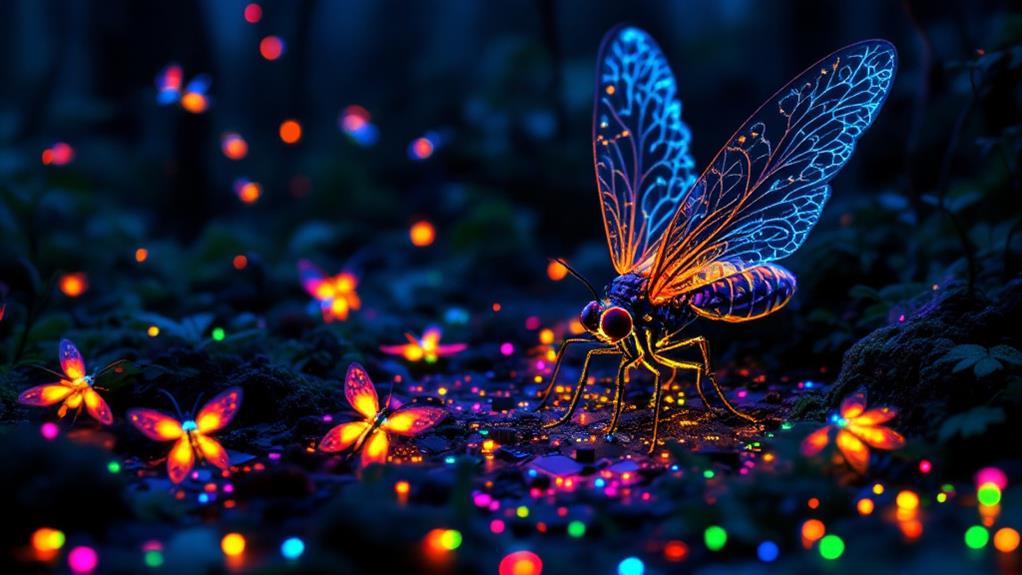
Firefly-inspired LED lights merge nature's efficiency with state-of-the-art technology. These innovative designs mimic the unique structure of firefly lanterns, which use tiny scales to enhance light emission. By replicating this architecture, engineers have created LEDs with up to 55% increased light extraction. The bioluminescent process in fireflies has also influenced power management and energy harvesting in LED systems. You'll find these bio-inspired lights in various applications, from automotive headlights to medical sensors. As researchers continue to explore the secrets of firefly biology, you can expect even more exciting advancements in lighting technology. The future of illumination looks bright, with nature leading the way.
Firefly Biology: Nature's Light Show
Nature's most enchanting light show comes from a tiny insect: the firefly. These bioluminescent beetles have enraptured humans for centuries with their mesmerizing flashes. You've likely seen them on warm summer evenings, lighting up fields and forests with their ethereal glow.
Fireflies produce light through complex luminescence mechanisms in their abdomens. Their light-producing organs, called lanterns, contain specialized cells packed with a chemical called luciferin. When luciferin combines with oxygen and an enzyme called luciferase, it triggers a chemical reaction that emits light. Remarkably, fireflies can control this reaction, allowing them to flash on and off at will.
Different firefly species have unique flash patterns, which they use to attract mates and communicate. Some species even synchronize their flashes, creating spectacular light displays. The efficiency of firefly bioluminescence is astounding, with nearly 100% of the energy converted to light. This makes it far more efficient than traditional light bulbs, which waste most of their energy as heat. Scientists have long been fascinated by firefly biology, studying their luminescence mechanisms to develop more efficient lighting technologies inspired by nature's ingenuity.
LED Technology Fundamentals
Turning from nature's light show to human-made illumination, LED technology has revolutionized the lighting industry. LEDs, or Light Emitting Diodes, are semiconductor devices that emit light when an electric current passes through them. They're more energy-efficient, longer-lasting, and more versatile than traditional lighting sources.
At the heart of LED technology is the p-n junction, where positively and negatively charged semiconductor materials meet. When electricity flows through this junction, electrons and holes recombine, releasing energy in the form of light. The color of the light depends on the materials used in the semiconductor.
LED matrix design allows for the creation of complex displays and lighting patterns. By arranging multiple LEDs in a grid, you can create essential and programmable light shows. Power management systems are pivotal in LED technology, ensuring perfect performance and longevity. These systems regulate voltage and current, prevent overheating, and allow for dimming and color control.
LEDs have found applications in everything from small electronic displays to large-scale architectural illumination. Their efficiency and flexibility continue to drive innovation in lighting design and energy conservation.
Biomimicry in Lighting Design
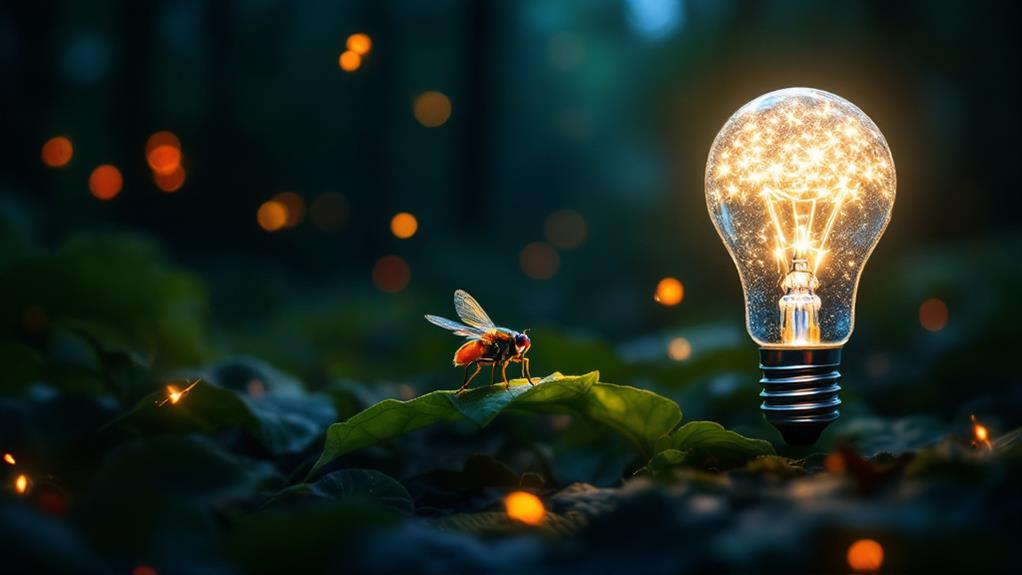
Through biomimicry, lighting designers are finding ingenious ways to replicate nature's efficiency and beauty in artificial illumination. You'll find that this approach has led to significant advancements in sustainable energy production and bioinspired material design. By studying fireflies, researchers have uncovered secrets to creating more efficient LEDs that produce brighter light with less energy.
The structure of firefly lanterns has inspired innovations in LED lens design, improving light extraction and directionality. You'll notice that these bioinspired LEDs often feature textured surfaces or specialized coatings that mimic the firefly's light-emitting organ. This results in reduced internal reflection and increased light output.
Biomimicry has also influenced the development of light-responsive materials. You'll see smart lighting systems that adjust their intensity and color based on environmental cues, much like how fireflies modulate their bioluminescence. These adaptive lighting solutions contribute to energy conservation and improved user comfort.
As you investigate the world of biomimetic lighting, you'll uncover that nature's designs are continuously inspiring more efficient, sustainable, and visually appealing illumination solutions. This fusion of biology and technology is revolutionizing the lighting industry, propelling the way for a brighter, more eco-friendly future.
Firefly Lantern Structure Analysis
Frontier research into firefly lantern structures has revealed fascinating observations that are revolutionizing LED design. When you examine a firefly's lantern under a microscope, you'll notice its unique architecture. The lantern's surface is covered in tiny, scale-like structures that enhance light emission and reduce internal reflection.
These scales, arranged in a specific pattern, play an essential role in the lantern's biomechanics. They're not just for show; they significantly improve the firefly's light-emitting properties. Scientists have found that this natural design allows fireflies to produce light with nearly 100% efficiency.
You might wonder how this applies to LED technology. Well, researchers are now mimicking these structures to create more efficient LED lights. By replicating the firefly's lantern architecture, they've managed to increase LED light extraction by up to 55%.
The analysis of firefly lanterns has also revealed the presence of a specialized reflective layer beneath the light-producing cells. This layer helps direct the light outward, minimizing energy waste. Engineers are now incorporating similar reflective layers in LED designs to enhance their performance and energy efficiency.
Enhancing LED Efficiency
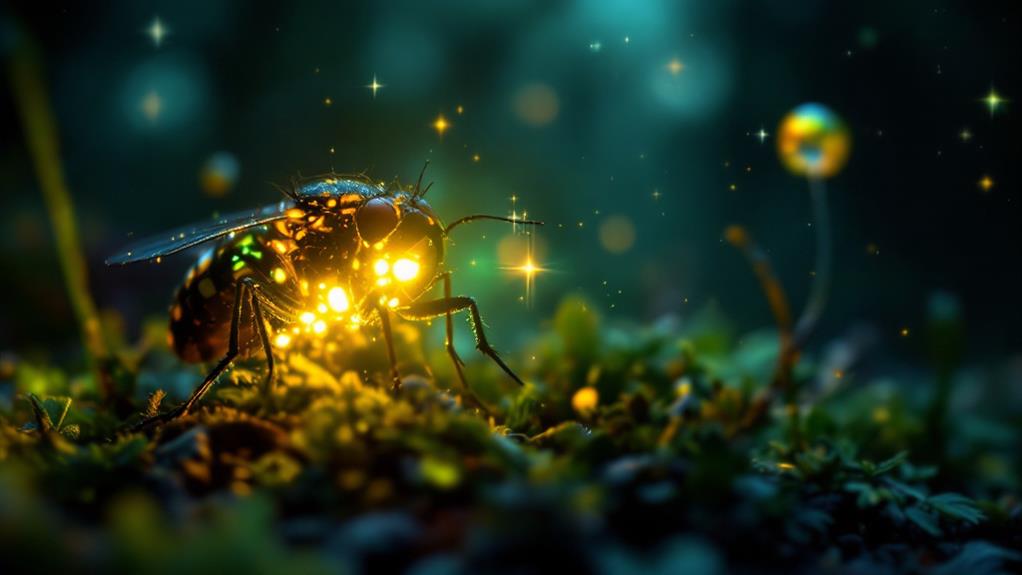
Several breakthroughs in LED technology have emerged from firefly-inspired designs. You'll find that researchers have successfully mimicked the unique lantern structure of fireflies to enhance LED efficiency. By incorporating similar light-extracting structures, they've managed to significantly increase light output while reducing energy consumption.
One of the key areas where firefly-inspired designs have made a difference is in thermal management strategies. Just as fireflies efficiently dissipate heat from their bioluminescent reactions, engineers have developed advanced cooling mechanisms for LEDs. This allows for higher power output without compromising the lifespan of the device.
Energy harvesting mechanisms have also been influenced by firefly biology. Scientists have investigated ways to capture and reuse waste energy, inspired by the firefly's ability to convert chemical energy into light with minimal loss.
Enhanced light extraction through bio-inspired nanostructures, improved heat dissipation using biomimetic materials, and optimized energy conversion processes based on firefly biochemistry are some notable improvements in LED efficiency.
Applications of Firefly-Inspired LEDs
Firefly-inspired LEDs are revolutionizing various industries with their enhanced efficiency and unique properties. You'll find these innovative lights making waves in fields ranging from automotive to medical technology.
In the automotive sector, these LEDs are being used to create more energy-efficient headlights and taillights. Their improved light extraction and directionality mean you'll get better visibility while using less power. This translates to increased safety on the roads and reduced energy consumption for electric vehicles.
The medical field is also benefiting from firefly-inspired LEDs. They're being used in advanced bionic sensors for non-invasive health monitoring. These sensors can detect minute changes in your body's biochemistry, offering early detection of various conditions.
In the domain of energy harvesting, these LEDs are showing promise. When reverse-engineered, they can effectively convert light into electricity, potentially leading to more efficient solar panels and self-powered devices.
You'll also see these LEDs in state-of-the-art display technologies. Their enhanced brightness and color accuracy are improving everything from smartphone screens to large-scale outdoor displays, offering you clearer, more vivid visuals while consuming less power.
Future of Bioluminescent Technology
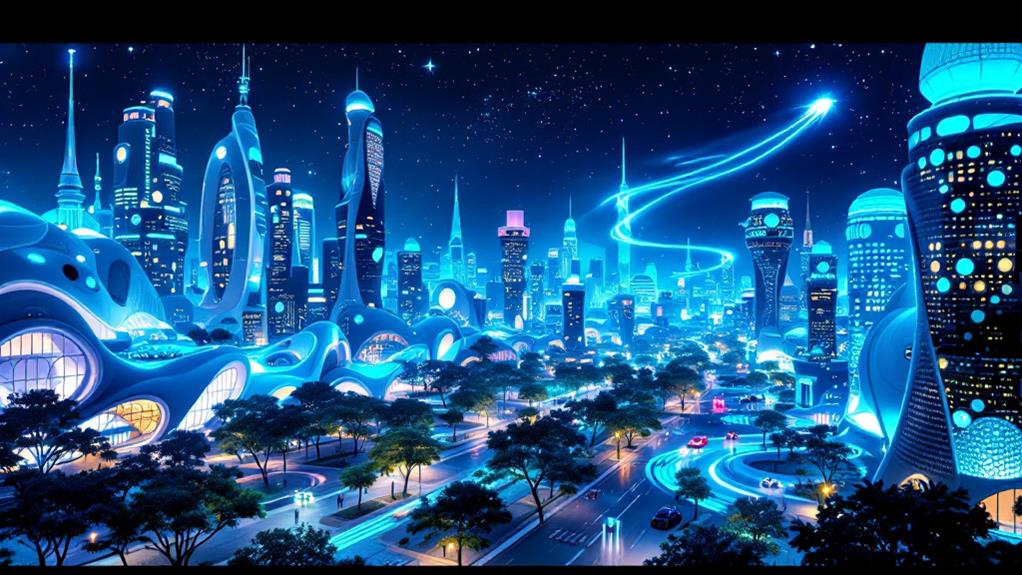
The future of bioluminescent technology extends far beyond current applications, promising pioneering advancements across various fields. You'll see this nature-inspired innovation revolutionizing renewable energy sources and energy-efficient lighting solutions. As researchers continue to unveil the secrets of bioluminescence, you can expect to witness groundbreaking developments in medical imaging, environmental monitoring, and even space exploration.
Imagine a world where:
- Your home is lit by glowing plants that require no electricity
- Highways are illuminated by bioluminescent trees instead of streetlights
- Bioluminescent markers help doctors detect diseases earlier and more accurately
These scenarios might seem like science fiction, but they're closer to reality than you think. Bioluminescent technology is positioned to transform the way we generate and use light, potentially reducing our reliance on traditional energy sources. You'll likely see more efficient, eco-friendly lighting systems inspired by fireflies and other light-emitting organisms. As this field progresses, you can anticipate a future where bioluminescence plays a pivotal role in creating sustainable, energy-efficient solutions for our growing global population.

